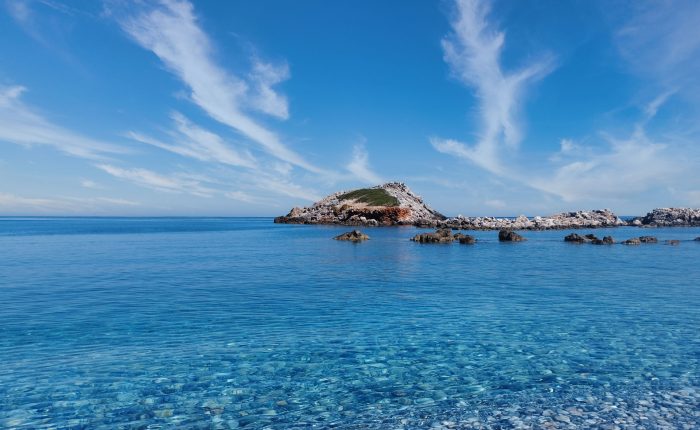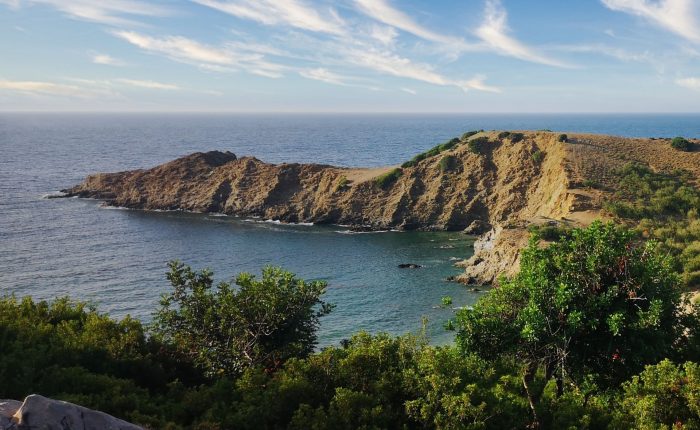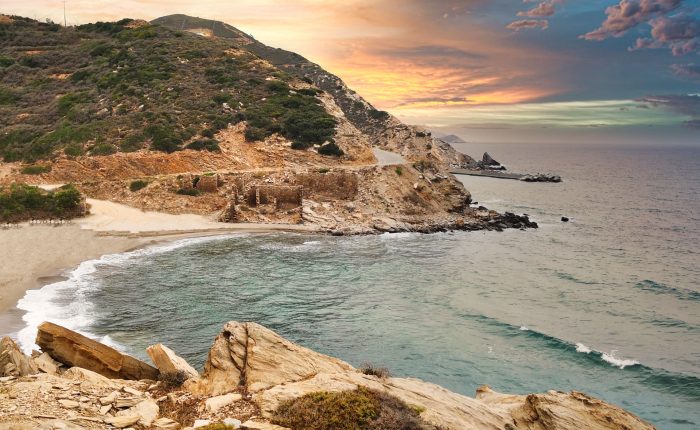Nestled in a hard-to-reach area between Bali and Skepasti, in the province of Mylopotamos, lies the stunning beach of Dafnorouma. The name of the beach comes from the Greek words ‘daphne’ (Nerium oleander) and ‘rouma’ (stream), referring to the hundreds of oleanders found in the stream that empties into the sea. The beach is encircled by magnificent rocks, with a particularly impressive ‘mirror’ – a large cliff with a smooth surface – located at its western end. Visitors can seek shelter from the sun in some of the small caves, while in the winter, waterfalls form in the stream. The seabed is rocky and the sea can be quite wavy; unfortunately, the beach is often covered in trash that is carried by north winds.
Reaching Dafnorouma can be a challenge. A very bad dirt road leads to the beach from Skepasti, used by local shepherds, but due to its poor condition, the only way to access it is by boat from Bali or Panormo. Before the highway passing next to the village was constructed in the 1960s, Dafnorouma was one of the main ways for inhabitants of Skepasti to get to the sea.
The beach also holds a tragic story. According to local tradition, this is the beach from where pirates arrived and captured the girls of the village and sold them as slaves. During the occupation of Crete, the Germans turned the beach into a minefield in an attempt to prevent British landings. In March 1943, a shepherd named Ioannis Protogerakis crossed the safety wire for an unknown reason and was killed by a mine. Georgios Kalivianakis, a close friend of the Protogerakis, was also injured while attempting to carry the corpse, and both men eventually passed away. The two friends were then buried in the same grave the following day. An iconostasis stands above the beach, commemorating this tragic event.













